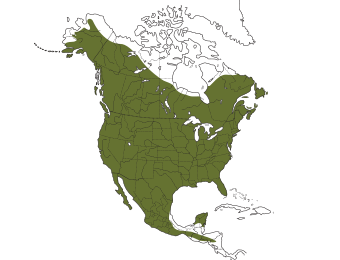Great Horned Owl
Nest structure Plan and Information
Select another species:

Construction difficulty:
kid-friendly
simple
Download Nest Structure Plan
Species in decline
This species is in decline in certain regions. You can put up a nest box to help if you live in the right region and habitat.
- Declining
- Not declining
- Not present
Nesting Habitat
- Forest
- Open Woodland
Attach Nest Box To
- Live tree
Known Nesting Period
Not Nesting
Some Nesting Occurrence
Nesting in Most of Range
JAN
FEB
MAR
APR
MAY
JUN
JUL
AUG
SEP
OCT
NOV
DEC
Nest Box Placement
Nest Height:
15ft
45ft
15–45 feet
Minimum Spacing:
1.5 mile
Facing:
Not applicable
Helpful Tips
- Place nest cones in trees in the fall so they can be located by owls by the following January.
- Place the nest in a live hardwood tree that is at least 12 inches in diameter.
- Placing nest cones in orchards or on farm woodlots can help control rodent populations.
- Construction tips: Use a plant stand with a 12 inch opening to hold the cone during construction. Build a raft-like base at the bottom of the nest cone and secure the base to the sides of the cone with landscaping wire. Create vertical stick spokes (visualize a bike wheel) to use for attaching horizontal sticks. Work your way from the bottom to the top, securing sticks in 6 inch segments with landscaping wire. Add loops to the outside of the cone to aid in installation. Have an arborist install the cone! When Great Horned Owls select a tree as their nest site, they prefer to nest at a height of 15-45 feet; in hardwood trees with at least a 12 inch diameter.
 Source:
Source: 